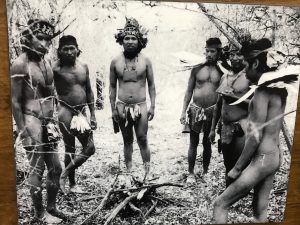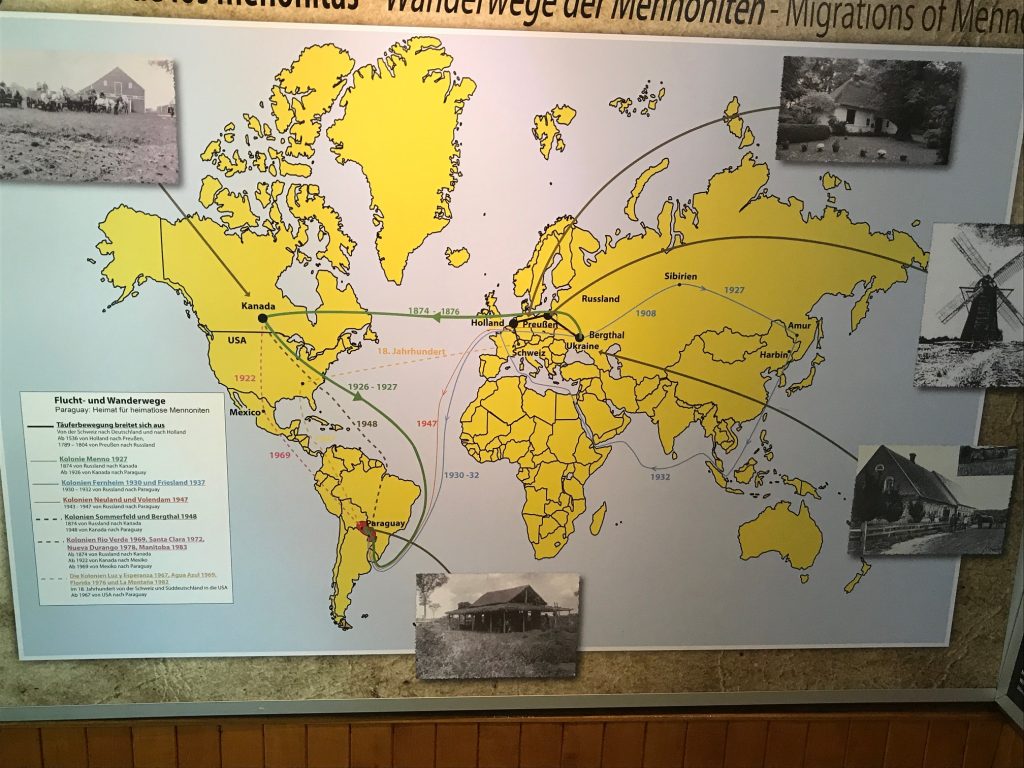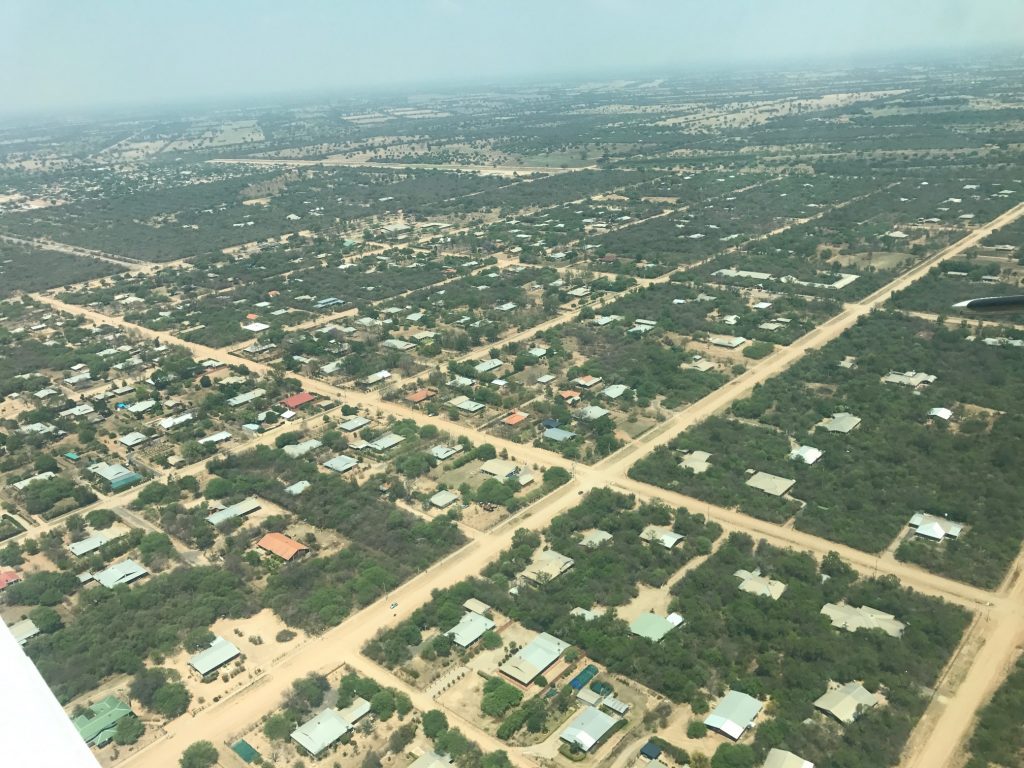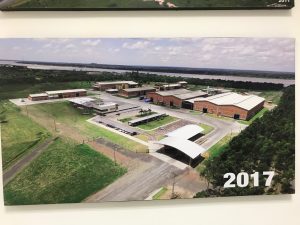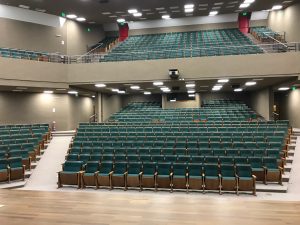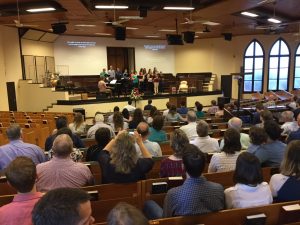Cultural Collison in the Chaco
This blog is based on my visit to the Paraguayan Chaco October 2017. I have visited the region regularly since 1971 and have various relationships with the people and the region. This blog describes the unique 90-year interaction between two very different cultures – Conservative Mennonite colonists and hunter-gatherer populations.
Cultures collide but there are seldom events or experiences that are singular or isolated enough to represent an experiment in a test tube. The arrival in the Paraguayan Chaco of Germanic-Mennonite colonists from Canada – who had themselves emigrated a generation earlier from the steppes of the Ukraine – represent such a unique anthropological experiment.
Mennonites from western Canada moved as a Community to the Central Chaco in 1927. They were a portion of the earlier 1874 movement of Mennonites from the Ukraine to Canada. Both movements represented a conscious choice for separation from the world – but also for land – by the more conservative-inclined members of that religious community. The motivation and objective in both movements was the desire to live according to their view of how religion and faith should be expressed.
Both emigrations were stimulated in part by actions of Government. Russia reduced the cultural and religious independence of the community following its defeat in the Crimean War. Canada removed privileges granted to the Mennonite Community in relationship to their pacifist positon and in their right to operate schools in their own (German) language.
The Mennonites or Anabaptists had emigrated as religious refugees from the Netherlands in the 16th century. Religious discrimination caused them to coalesce as a separated Community in the Vistula River Delta. The language changed from Flemish and Frisian to the predominant low German. The 19th century militarism of an emerging Prussia caused a further relocation to the steppes of southern Russia – a region recently conquered by Catherine the Great and cleansed of its former Muslim inhabitants. The Russian policy of enforced separatism of communities resulted in prosperous self-governing German-speaking colonies that have been referred to as a “Mennonite Commonwealth”. They were prosperous and essentially self-governing. That history is important in terms of their behaviour and ability to function as a self-governing community in the Chaco wilderness. Four centuries of persecution, separation and isolation turned a northern European population into effectively an ethnic group.
- Replica of the “Red Gate” at the border between Russia and Latvia – passing the gate meant freedom from Tyranny.
- Photo of refugees arriving in the Chaco after a harrowing journey through Siberia, across the Amur River to China and then a long and complicated journey or rejection until they reached Paraguay. The finger points to the man who rescued my mother when the raft tipped crossing the Amur River to China and she was in danger of drowning.
The Mennonites purchased land in the Central Chaco with at least some understanding that the land was unoccupied or at least free of permanent indigenous settlements. The Chaco – sometimes referred to as a “green hell” – is the portion of Paraguay lying west of the RIO Paraguay and was and still is a hostile physical environment. It had defied successful settlement by external groups. Estimates of indigenous populations at the time in an area of 250,000 square km was less than 5000 individuals.
- Arial photo of a Mennonite village in the Central Chaco. The form of a row of houses with barns attached and surrounded by orchards originated in Prussia centuries ago.
- The Green hell of the Chaco has been transformed info modern urban communities with every amenity.
Although the original (1927) Mennonite colonists represented a conservative religious selection from Canada, the vicissitudes of war and remote bureaucratic choices resulted in adjacent settlement by two other Mennonite groups. Although they are fully part of the same cultural, racial and religious tradition their experiences and reasons for coming to the Chaco were very different. This mix of similar groups with very different recent histories had important consequences since they had varying views relating to subjects such as modernity, education and relationships to other cultures.
The result was a cluster of 3 adjacent settlements reflecting significant experiential differences. The original 1927 migration is known as the Menno Colony centered in Loma Plata. The second is Fernheim centered around the town of Filadelfia. It was settled by refugees from the Soviet Union who quite literally missed the last train to the West in the late 1920’s and many escaped via Harbin in China. (My mother was part of the Harbin group but with two student friends ventured alone and illegally to travel to San Francisco – all managed to become academics in the USA). With no other choices these “Harbiners” were resettled in the Chaco in 1930. The third group were stranded refugees from inside the Soviet Union at the end of WWII who also had few choices and were settled in Neuland Colony in the Chaco in 1948.
The arrival of the Mennonite colonists resulted in a self-initiated response by indigenous groups. The Great Chaco War of 1932-35 between Bolivia and Paraguay contributed to the process when Mennonite colonists protected the vulnerable indigenous groups from the effects of the war. They began to relate to the colonies in various ways. This included a work relationship, the search for assistance during times of food shortage, access to health and other services. Over time these occasional contacts morphed into a more permanent settlement pattern of indigenous people in and around the colonies. The Mennonite motivation related to the need for labor, simple human response to a less-advantaged Group but also by religious conviction.
Over a period of 90 years these two populations have developed a more permanent and stable relationship structure. This includes employment, the development of colonist support for services such as health and education, economic assistance to encourage self-reliance and also a sharing of views about faith.
What is notable about this 90-year co-Development is the almost complete absence of Government. It can be argued that this parallel development was not constructed out of a modern anthropological, sociological or human rights perspective. On the other hand, the faith perspective of the community and the perspective on fairness, justice and responsibility for the other was at least an important element in these developments.
Today the Mennonite Colonies represent an unusual model of development with an impressive economic achievement and stable and advanced social and cultural institutions. After 3 decades of physical isolation the Mennonites constructed a 450 km gravel highway to connect to the outside world. With some support from North American and later European Mennonites they have accomplished impressive economic development primarily around the use of the availability of large tracts of land and the development of a cattle-based industry. This includes a modern and dominant dairy industry and a highly-developed industry based on raising cattle for meat. With modern technology and seed the historically un-productive Chaco is now turning green and valuable with crops like soybeans.
- Mennonite industries dominate certain sectors of the economy. This is a modern tannery and a major supplier of leather to my furniture business.
- A modern tannery.
- Leather is the most important commodity in my business.
The indigenous population has concentrated itself near the colonies and with food and health stability has grown in numbers. The economic success of the colonies has created employment opportunities for the traditional Paraguayan Latino population from other parts of Paraguay and they now represent a third population.
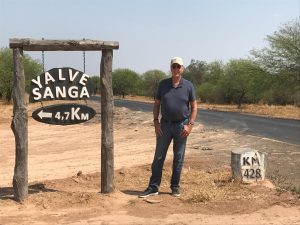
Yalve Sanga is the center of services to indigenous people. Note the Trans-Chaco highway built in the early 1960’s largely by Mennonite volunteers to create the first transportation link to the Mennonite colonies after 30 years of isolation.
This accidental meeting of populations with little policy guidance and presence of Government represents a unique and unintended laboratory experiment. The Government did not begin to express any interest or affect policies until the 1970’s and generally only more recently. The Mennonite colonies inherited a Cooperative community structure from their experience as organized colonies in tsarist Russia and to some degree the forced cooperative systems of the Soviet era. Highly organized cooperative structures that involve control of the land, major economic activities and the revenue-generating basis for schools, security and health care has resulted in a fully alternative form of Government.
In the absence of any engagement by the Government of Paraguay these highly developed Cooperative or Community structures and forms of Governance permitted the Mennonite colonies to develop parallel structures within the indigenous communities as acts of both charity and self-interest. The indigenous communities are clearly less ‘developed’ in every usual sense of the word but there is a certain stability in terms of access to employment, reasonably well-built homes, land ownership and access to services such as education and health care. The symbiotic relationship has resulted in many of the indigenous accepting Christianity and forming churches that are parallel to those of their Mennonite neighbors.
How do these three populations compare in economic terms? Statistics are available for the population of Paraguay as a whole but not for its individual elements. The GDP of Paraguay is reported as US$4,000 per capita and double that on a PPP basis. Estimates of GDP of the Mennonite colonists who form a very distinct sub-population are as much as 10 times as high as the average of the country – a quite astounding result since the colonists settled on the least productive land and arrived as poor or penniless refugees. The GDP of the indigenous has been estimated in the range of $1500 per capita.
The ethnic Mennonites represent a small but highly visible population within the Paraguayan whole due to their unique and concentrated location and their important economic role. They participate at the highest levels of Government and play important roles in the economic and social life of the country. Although citizens of Paraguay they retain important language, cultural and frequently citizenship linkages to other parts of the world.
- A new 900 seat cultural and concert center in Loma Plata – originally the most conservative of the Mennonite colonies.
- Mennonite churches and church services are indistinguishable from churches in North America.
They are both insiders and outsiders. As a wealthy ethnic community they are sometimes subject to criticism that their relative wealth (according to some radical political views) can only be accounted for by exploitation. Others are critical of the practice of sharing their faith with the indigenous groups as well as with their Latino neighbors.
There have been some politically-motivated kidnappings in related colonies in East Paraguay and some are still unresolved.
I did a personal study of the colonies many decades ago when they were still emerging from an animal-traction economy and calculated that the community was re-investing fully 25% of its gross economic turnover annually – an astounding savings rate and one that would account for much of the economic progress. The ability to work as a community through their cooperative structures also defies much of the logic of our worship of individual enterprise – yet has been critical to success in a hostile physical environment.
A final thought is the question of the relationship of the two very different cultures – European/Germanic and hunter-gatherer indigenous without the benevolent intervention of Government and without the possibly questionable benefit of anthropological wisdom.
Three different cultures are living and evolving within a modernizing Paraguay. Increasing self-awareness on the part of the indigenous community and a political environment that includes risks of instability suggest a future that is not without risks. Whatever the outcome the unique co-development of Mennonite colonists and the hunter-gatherers of the Central Chaco represent an interesting experiment in cultural development. The absence of Government is a unique feature of this process.
This is a living process and the final chapters are not yet written.

